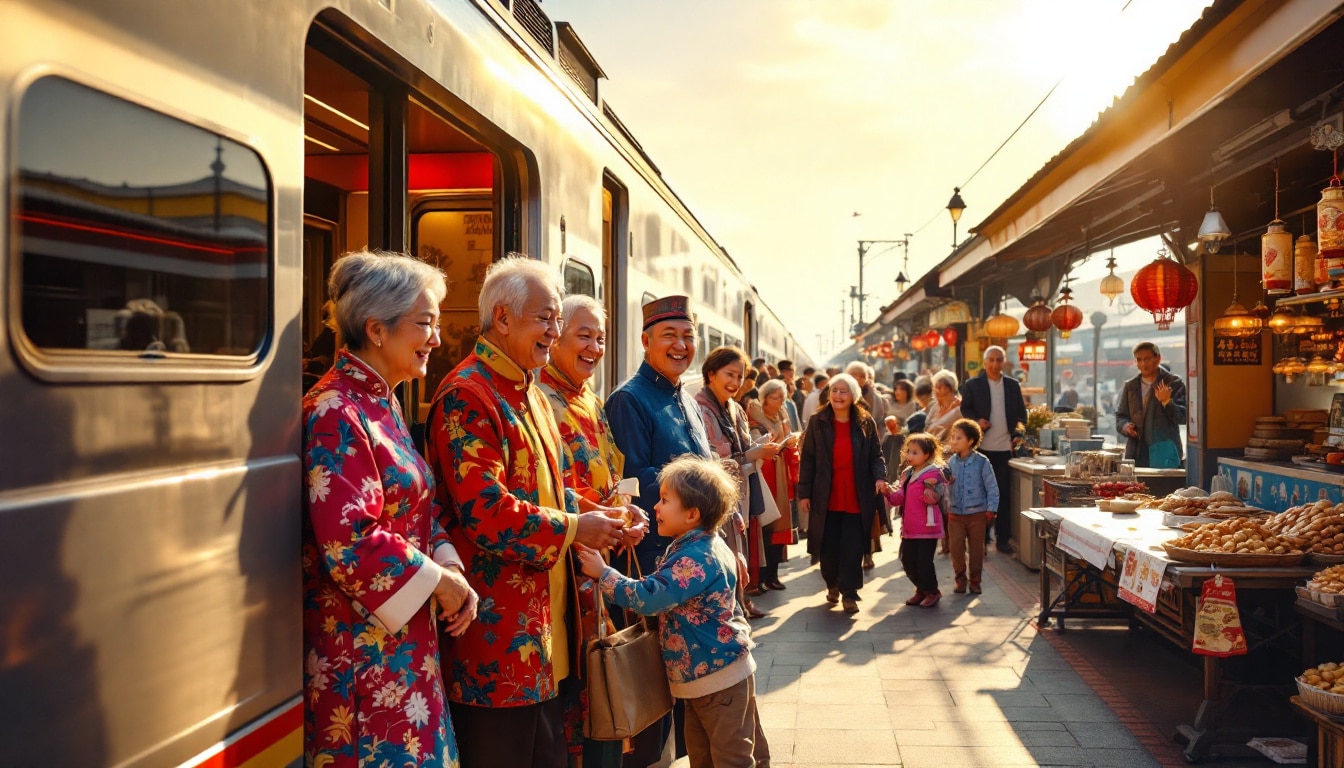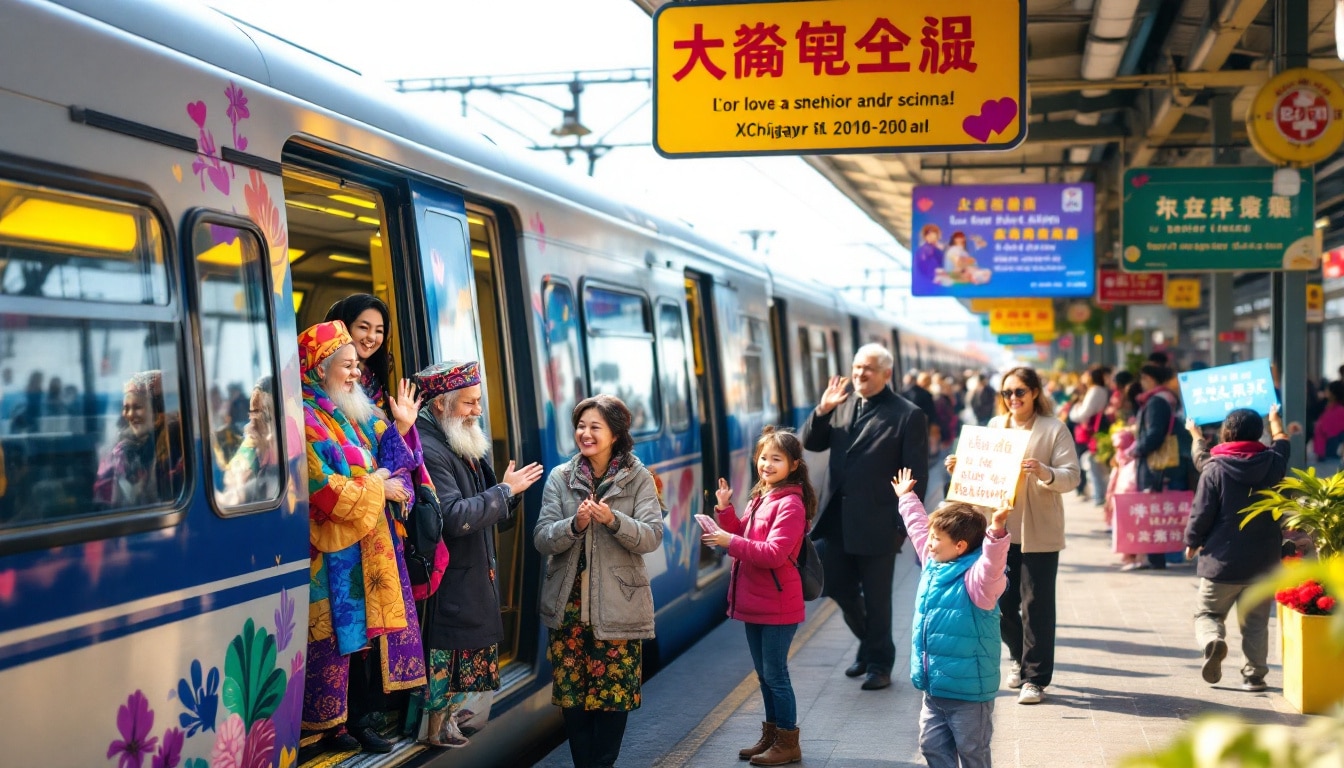Navigation on our site relies on advanced technologies. We use cookies to provide you with a personalized experience. This data allows us to protect against fraud and improve our services.
Thanks to these tools, we can monitor service interruptions and ensure the safety of our users. Furthermore, we measure the engagement of our audience to better understand your needs and adjust the quality of our offerings. By accepting all cookies, you contribute to the development of new features and the effectiveness of our advertisements. If you prefer, you can choose not to customize your content while still benefiting from an experience tailored to your location and current preferences.

“`html
Table des matières
ToggleThe ‘silver-haired’ trains: a revolution for seniors
The silver-haired trains represent a significant advancement in transportation services dedicated to seniors. Designed to meet the specific needs of elderly individuals, these trains offer increased comfort, tailored spaces, and personalized services. This initiative aims to encourage travel and social activities among the elderly, thereby promoting their well-being and independence.
The introduction of these specialized trains responds to a growing demand from seniors wishing to travel safely and enjoyably. Amenities include ergonomic seating, spaces for wheelchairs, and trained staff to assist elderly passengers. Additionally, these trains offer activities and workshops tailored to allow travelers to fully enjoy their journey while remaining active.
This initiative is part of the broader silver economy, which recognizes the economic and social importance of seniors. By investing in suitable infrastructures, railway companies contribute to the inclusion of the elderly in daily life and local economies.
Moreover, these trains promote the maintenance of family and social ties by facilitating transportation for seniors to visit their loved ones or leisure locations. This increased accessibility also stimulates tourism dedicated to seniors, thus creating new economic opportunities for serviced regions.
How is Xinjiang capitalizing on the economy of the elderly?
The Xinjiang, an autonomous region of China, has adopted a proactive approach to leverage the silver economy. By implementing targeted policies and infrastructures, Xinjiang seeks to maximize the economic contributions of seniors while addressing their specific needs. This strategy involves a combination of service development, business support, and the creation of suitable job opportunities.
One of the flagship initiatives is the establishment of modernized senior residences, which offer not only comfortable accommodation but also health services, recreational activities, and continuous training opportunities. These residences are designed to encourage an active and social lifestyle, reducing the isolation of seniors and promoting their community participation.
Furthermore, Xinjiang invests in adapted fitness programs, such as those described in simple fitness exercises in a chair. These programs aim to maintain the physical and mental health of seniors, allowing them to stay independent longer.
The elderly economy in Xinjiang also benefits from the rise of adapted businesses, which offer products and services specifically designed for older adults. These businesses play a crucial role in creating jobs and stimulating innovation while meeting the growing needs of this population.
What are the advantages of the ‘silver-haired’ trains for seniors?
The silver-haired trains offer a multitude of advantages for seniors, going far beyond simple transportation. First, they provide enhanced security with monitoring devices and support specifically designed for the elderly. If needed, the staff is trained to provide immediate assistance, thus ensuring peace of mind for passengers and their families.
Next, these trains encourage social interaction, an essential element for the well-being of seniors. Common areas allow passengers to meet others with similar interests, thereby reducing the feeling of isolation often experienced by older adults. Activities and workshops are regularly organized, providing opportunities for entertainment and personal development.
Moreover, the ‘silver-haired’ trains incorporate modern technologies to enhance the travel experience. Simplified booking systems, real-time information, and personalized services ensure an easy and pleasant navigation for seniors. These technological innovations are essential to adapt railway services to the evolving needs of the elderly.
Finally, these trains contribute to a better quality of life by providing easy access to cultural, medical, and recreational destinations. Seniors can thus continue to explore new horizons, enriching their daily lives and allowing them to stay active and engaged.
What are the challenges faced by Xinjiang in leveraging the economy of the elderly?
Despite the numerous advantages, Xinjiang faces several challenges in leveraging the elderly economy. One of the main obstacles is the funding of suitable infrastructures. The creation of modern senior residences, fitness programs, and other specialized services requires significant investments, which can be difficult to mobilize in a competitive economic environment.
Another major challenge is staff training. Providing quality services to seniors requires qualified professionals specifically trained to meet their needs. The shortage of qualified staff can hinder the effective implementation of dedicated programs and services.
Moreover, raising awareness and educating seniors themselves poses a challenge. Encouraging the elderly to adopt new services and technologies requires communication and training efforts to overcome barriers related to habit and distrust towards new methods.
Finally, Xinjiang must navigate a complex regulatory environment. Public policies must continuously adapt to support the growth of the silver economy while ensuring the protection of rights and the well-being of seniors. Coordination among different levels of government and private actors is essential to overcome these challenges.
The impact of the ‘silver-haired’ trains on culture and tourism
The silver-haired trains have a significant impact on culture and tourism in the regions served. By facilitating travel for seniors, these trains open up new perspectives for cultural tourism, allowing older adults to discover historical sites, museums, and cultural events without the usual transportation constraints.
This increased accessibility stimulates the development of cultural tourism, bringing economic benefits to local communities. Tourist destinations see an increase in attendance, which translates into higher revenues for businesses, restaurants, and local service providers.
Additionally, cultural activities tailored to seniors, such as guided tours at a suitable pace or interactive workshops, enrich the experience for elderly travelers. These initiatives encourage active participation and a deeper appreciation of local culture, strengthening the bonds between visitors and communities.
Furthermore, the integration of modern technologies in the silver-haired trains, such as the broadcasting of cultural content or interactive applications, enhances the travel experience and makes cultural discovery more engaging for seniors.
Finally, these trains contribute to the preservation of cultural heritage by encouraging seniors to get involved in volunteer or mentoring activities, thus sharing their knowledge and experience with younger generations.
Strategies of Xinjiang to support the silver economy
To effectively support the silver economy, Xinjiang has implemented several key strategies aimed at optimizing resources and maximizing benefits for seniors. One of the main strategies is to promote innovation in services for the elderly, encouraging the creation of new technologies and solutions tailored to their needs.
Xinjiang also invests in the training and professional development of staff working with seniors. Specialized training programs are established to ensure that employees have the necessary skills to provide quality, respectful, and effective services.
Moreover, the region collaborates with private companies and non-governmental organizations to develop public-private partnerships. These collaborations allow for resource pooling and innovation in service offerings while ensuring broader and more effective coverage of the needs of seniors.
Additionally, Xinjiang emphasizes awareness and education for seniors, informing them about available services and encouraging them to actively participate in economic and social life. Targeted communication campaigns and community events are organized to strengthen the participation and engagement of the elderly.
Finally, tax incentives and grants are offered to businesses that develop products and services for seniors, thus stimulating innovation and supply in the market. These measures foster a favorable environment for the growth of the silver economy while ensuring that the needs of the elderly are at the heart of economic development policies.
The future prospects of the silver economy
The silver economy presents promising prospects at both national and international levels. With the aging global population, the importance of this economy continues to grow, offering many opportunities for businesses, governments, and communities. Innovations in services and technologies dedicated to seniors continue to develop, paving the way for new solutions to improve the quality of life for the elderly.
Projects such as the silver-haired trains in China demonstrate how current initiatives can lead to tangible improvements in the mobility and well-being of seniors. These initiatives serve as models for other regions, encouraging the adoption of similar solutions worldwide.
In addition, the growth of the silver economy stimulates the development of cultural tourism dedicated to seniors, thus creating new market niches and economic opportunities for the hospitality, restaurant, and leisure sectors.
The focus on sustainability and social inclusion in the strategies of the silver economy ensures that benefits are shared equitably and that services are accessible to all seniors, regardless of their geographical location or resources.
Finally, technological advancements will continue to play a crucial role in the evolution of the silver economy, with innovations such as artificial intelligence, telemedicine, and home automation solutions promising to transform the daily lives of seniors by offering more personalized and effective services.








